-
Welcome! The TrekBBS is the number one place to chat about Star Trek with like-minded fans.
If you are not already a member then please register an account and join in the discussion!
You are using an out of date browser. It may not display this or other websites correctly.
You should upgrade or use an alternative browser.
You should upgrade or use an alternative browser.
Sizes of the Klingon D7 and K't'inga battle cruisers
- Thread starter Lord Other
- Start date
Okay, after messing around in Illustrator for awhile I came to the conclusion that the length of 858' for the D7 is workable, but leads to some spacing and layout issues when aligned with the exterior of the model that made me have second thoughts. I had already decided to take what I felt was a likely scaling factor for the interior sets of the D7 as seen in "The Enterprise Incident" and have the standard corridor height be 8' tall with a 12" thick deck (for wiring, conduits, piping, gravity plating, etc.), with each deck in effect 9' tall. Scaling the forecastle wedge to be two decks tall (per the model exterior) and taking that figure into account for the specified height resulted in the ship length increased from 858' as previously posted to a total length of exactly 902'. The breakdown of the re-calculated dimensions are shown below.
D7 Custom Replicas Dimensions
Length: 28.625" Beam: 7.226" Width: 19.75"
902' ÷ 28.625" = 31.5109170305 for upscaling
D7
Length: 902' / 274.93 m
Beam: 227.697' / 69.4 m
Width: 622.34' / 189.68 m
To give you some idea of what started all this, as I have been working on some screen accurate blues for the original TOS D7 I decided to take the official canon length of 748' or 228 m and ran into the following issue which was not evident in the Michael McMaster blues..
*As a note the figures in each of the diagrams are exactly 6' tall.
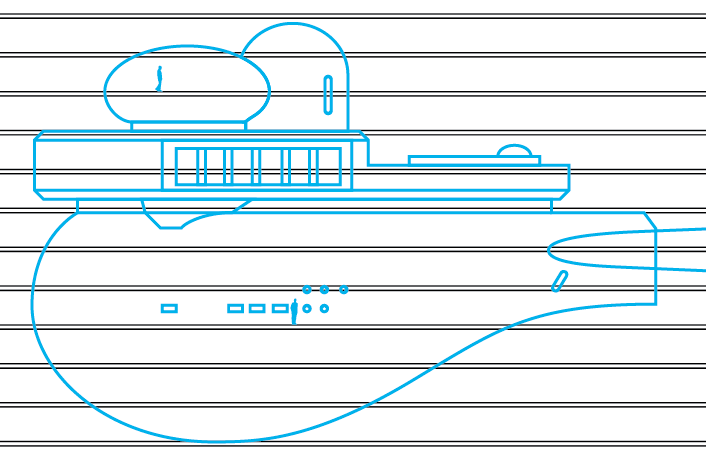
Positioned for the windows, this may work for the rectangular row of windows on the side of the bulb, and for the top row of windows on the forecastle, but the deck height for the lower forecastle deck makes it completely unusable in any real way (unless you are only 3' tall) and the bottom row of windows is partially blocked by the deck itself. Likewise the boom access shunt is completely unworkable as presented in this aspect as you can see.

Repositioning the deck arrangement thusly does allow for very tight access (at a almost 7' deck height) at the choke point where the boom enters the bulb, but the window arrangement is completely blocked for the rectangular rows on the bulb, and for the top of the forecastle. Further, though not shown, the shuttle bay doors are at less than 8' tall as I recall. I don't know how that would work out IRL given such little wiggle room, and such limited space for storing of craft aboard ship. Moving on..
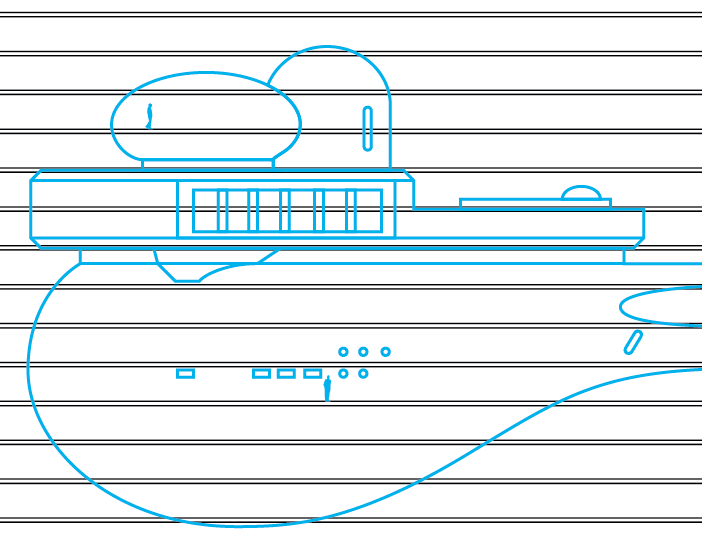
As noted 858' generally works, and the arrangement of the windows on the exterior of the model and that of the boom are generally cogruent with one another. My major concern is that shuttlebay spacing is tight, but theoretically I suppose it could work if handled by an automated system, as there's no significant allowance for any error. Otherwise, my only other point of contention is that the decks in forecastle wedge are "pinched" subtly, losing about 6 inches of height as a result.
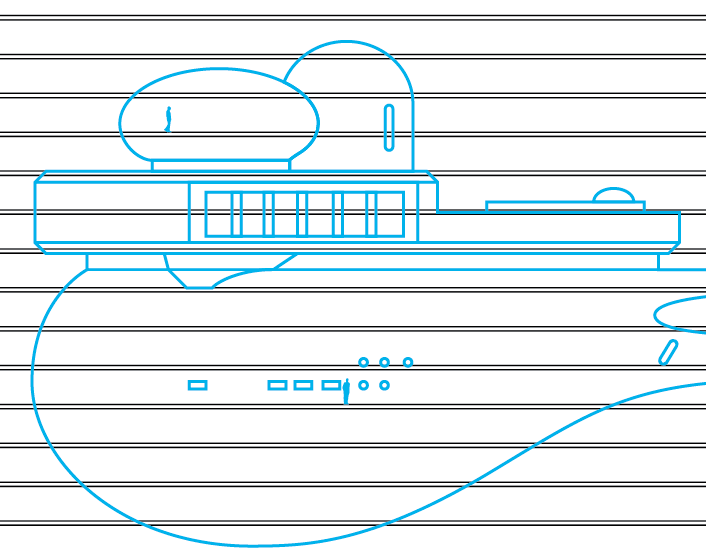
Finally, at 902' the forecastle wedge has full deck height, the rectangular windows on the side of the bulb and on the forecastle are also in good accord with the boom access shunt as shown. The aft section of the forecastle wedge also has full height and has fully accessible deck space for the life support equipment generally thought to be located there. The shuttlebay doors are now generally large enough that a shuttlecraft could conceivably be launched or landed without too much difficulty. That's it for tonight folks.
D7 Custom Replicas Dimensions
Length: 28.625" Beam: 7.226" Width: 19.75"
902' ÷ 28.625" = 31.5109170305 for upscaling
D7
Length: 902' / 274.93 m
Beam: 227.697' / 69.4 m
Width: 622.34' / 189.68 m
To give you some idea of what started all this, as I have been working on some screen accurate blues for the original TOS D7 I decided to take the official canon length of 748' or 228 m and ran into the following issue which was not evident in the Michael McMaster blues..
*As a note the figures in each of the diagrams are exactly 6' tall.

Positioned for the windows, this may work for the rectangular row of windows on the side of the bulb, and for the top row of windows on the forecastle, but the deck height for the lower forecastle deck makes it completely unusable in any real way (unless you are only 3' tall) and the bottom row of windows is partially blocked by the deck itself. Likewise the boom access shunt is completely unworkable as presented in this aspect as you can see.

Repositioning the deck arrangement thusly does allow for very tight access (at a almost 7' deck height) at the choke point where the boom enters the bulb, but the window arrangement is completely blocked for the rectangular rows on the bulb, and for the top of the forecastle. Further, though not shown, the shuttle bay doors are at less than 8' tall as I recall. I don't know how that would work out IRL given such little wiggle room, and such limited space for storing of craft aboard ship. Moving on..

As noted 858' generally works, and the arrangement of the windows on the exterior of the model and that of the boom are generally cogruent with one another. My major concern is that shuttlebay spacing is tight, but theoretically I suppose it could work if handled by an automated system, as there's no significant allowance for any error. Otherwise, my only other point of contention is that the decks in forecastle wedge are "pinched" subtly, losing about 6 inches of height as a result.

Finally, at 902' the forecastle wedge has full deck height, the rectangular windows on the side of the bulb and on the forecastle are also in good accord with the boom access shunt as shown. The aft section of the forecastle wedge also has full height and has fully accessible deck space for the life support equipment generally thought to be located there. The shuttlebay doors are now generally large enough that a shuttlecraft could conceivably be launched or landed without too much difficulty. That's it for tonight folks.
Last edited:
One of the issues I often have with blueprints for Sci-Fi ships is that they rarely take into account that it's a "ship", not an office building.
Deck height does not have to be consistent from deck to deck - as evidenced by the ol' 1701 herself and the engine room's roughly double-height. Also, keep in mind that some sections of a real ship are normally not accessed except during repairs or for retrieving specific supplies or equipment (i.e. just for storage or equipment space).
Here in Tejas - the old Battleship Texas was always an interesting thing to tour. Lots of variations in interior spaces, especially in the engine room(s). The Alabama (in Mobile) is newer and also has a very uneven layout in interior spaces.
Checkout the interior layout of an Aircraft Carrier and you'll also see extreme variations and some surprisingly cramped spots here and there. Some examples below:
https://i.pinimg.com/originals/ba/72/cd/ba72cd05101cbdf262fc894388a09d56.png
https://upload.wikimedia.org/wikipe...town-class_carrier_technical_drawing_1953.jpg
I'm not saying that your basic approach is bad - just that first off, everything doesn't have to line up perfectly for the design to be functional. We also need to remember that it's possible that some of the "windows" on the outside of a ship may not be for the crew to see out of but rather, for sensors to see out of.
Now, the shuttlebay doors on the old D-7 - that's always been an issue since way back in the before time...
Deck height does not have to be consistent from deck to deck - as evidenced by the ol' 1701 herself and the engine room's roughly double-height. Also, keep in mind that some sections of a real ship are normally not accessed except during repairs or for retrieving specific supplies or equipment (i.e. just for storage or equipment space).
Here in Tejas - the old Battleship Texas was always an interesting thing to tour. Lots of variations in interior spaces, especially in the engine room(s). The Alabama (in Mobile) is newer and also has a very uneven layout in interior spaces.
Checkout the interior layout of an Aircraft Carrier and you'll also see extreme variations and some surprisingly cramped spots here and there. Some examples below:
https://i.pinimg.com/originals/ba/72/cd/ba72cd05101cbdf262fc894388a09d56.png
https://upload.wikimedia.org/wikipe...town-class_carrier_technical_drawing_1953.jpg
I'm not saying that your basic approach is bad - just that first off, everything doesn't have to line up perfectly for the design to be functional. We also need to remember that it's possible that some of the "windows" on the outside of a ship may not be for the crew to see out of but rather, for sensors to see out of.
Now, the shuttlebay doors on the old D-7 - that's always been an issue since way back in the before time...
Marvel-related sidebar: If I ever revisit my Pericles Project Helicarrier cutaway with an eye towards working out deck-by-deck plans, @StarCruiser , you can bet that I'm going to make note of those cutaways.
Also, never been a fan of the idea of the "picture window" on the bow of the classic Kirby-drawn 'Carrier actually being a physical window into the ship's CIC-and-related compartments.
Also, never been a fan of the idea of the "picture window" on the bow of the classic Kirby-drawn 'Carrier actually being a physical window into the ship's CIC-and-related compartments.
@Shaw would disagree with this.Well - knowing the history of the TOS E, those seem reasonable.
The original Enterprise was supposed to be 540' long, with a crew of 203 but, Gene decided that that was too small for a long range explorer (probably correct) and had Matt Jefferies revise the ship. Matt's (logical) thought was to simply double it's size and make it 1080' long with a crew of over 400 and Gene decided that was too big (?!?).
Therefore, we got 947' feet (which was as close to practical as Matt could make it without Gene fussing about the size) and still had the crew at over 400 once the show really started.
If we go back to Matt's original rescaling of the ship to 1080' (1084' is close enough) then, yes - the Klingon ships should be larger as well and I would expect them to be proportionally so.
One of the issues I often have with blueprints for Sci-Fi ships is that they rarely take into account that it's a "ship", not an office building.
True, no argument there. However, internal structure should still conform with external design. In other words, you can't shoehorn a room into a space with a unrealistic height and expect it to make any sense, which I will propound on in a bit.
Deck height does not have to be consistent from deck to deck - as evidenced by the ol' 1701 herself and the engine room's roughly double-height. Also, keep in mind that some sections of a real ship are normally not accessed except during repairs or for retrieving specific supplies or equipment (i.e. just for storage or equipment space).
This is a valid point, and one that I have been working on for some time with this particular design. My major rules on this design are as follows:
1. In general, most door heights must match the standard door sizes (6' 6") given in the set plans for the E. As the Romulan D7 interior from TEI are re-dresses of the E's sets, I'm adhering to this point in most cases.
2. Not all windows on the exterior must conform to deck spacing, but most of them should. I take as given some of the round ports are probably thrusters or sensors, but while the longer rectangular ports could be sensors, I feel that a majority of them are windows.
3. The shuttle bay has to be a realistically usable space, period. It's associated spaces (control rooms) also must be able to accessed and used in a realistic manner. This is a problem as already noted with the model at the standard LOA as given, and it's made ever so much more worse if taken in context and reference to the K't'inga model that was intended to represent a upgraded form of the D7.
4. And perhaps most important, the boom access shunt into the Command Hull must allow for a 1' thick hull around *and* a standard height corridor -or- a turbolift car (with emphasis toward the latter), or both. We're not "Grissoming" it up on this baby.

5. Any spaces / features seen on the K't'inga will also be taken into acct. on in the D7, and will also be included. In effect I'm backwards engineering the design so both are cogent to one another.
I'm not saying that your basic approach is bad ..
I'm glad to hear that seing as how you have enjoyed my previous work!
 Thank you, and I greatly appreciate the feedback. Whereas with the previous works (The Great Awakening) you didn't get to see much of the work "behind the curtain" so to speak, I'm putting much more of my thinking on display here, mainly because this fictional ship is such a important fixture in the world of TOS.
Thank you, and I greatly appreciate the feedback. Whereas with the previous works (The Great Awakening) you didn't get to see much of the work "behind the curtain" so to speak, I'm putting much more of my thinking on display here, mainly because this fictional ship is such a important fixture in the world of TOS.Now, the shuttlebay doors on the old D-7 - that's always been an issue since way back in the before time...
Yeah, and to be honest its one of the biggies that's always annoyed me. I'm fine with people not wanting their canon interpretation of the world messed with, but I like things to make sense. Call it a failing, or just stubbornness, whatever the case may be, it's h0w I am. That said here are two different takes on the K't'inga shuttlebay, by two different artists. I can honestly say Schmidt does a better job accounting for positioning, and conforming with the model as given, as you can see below.
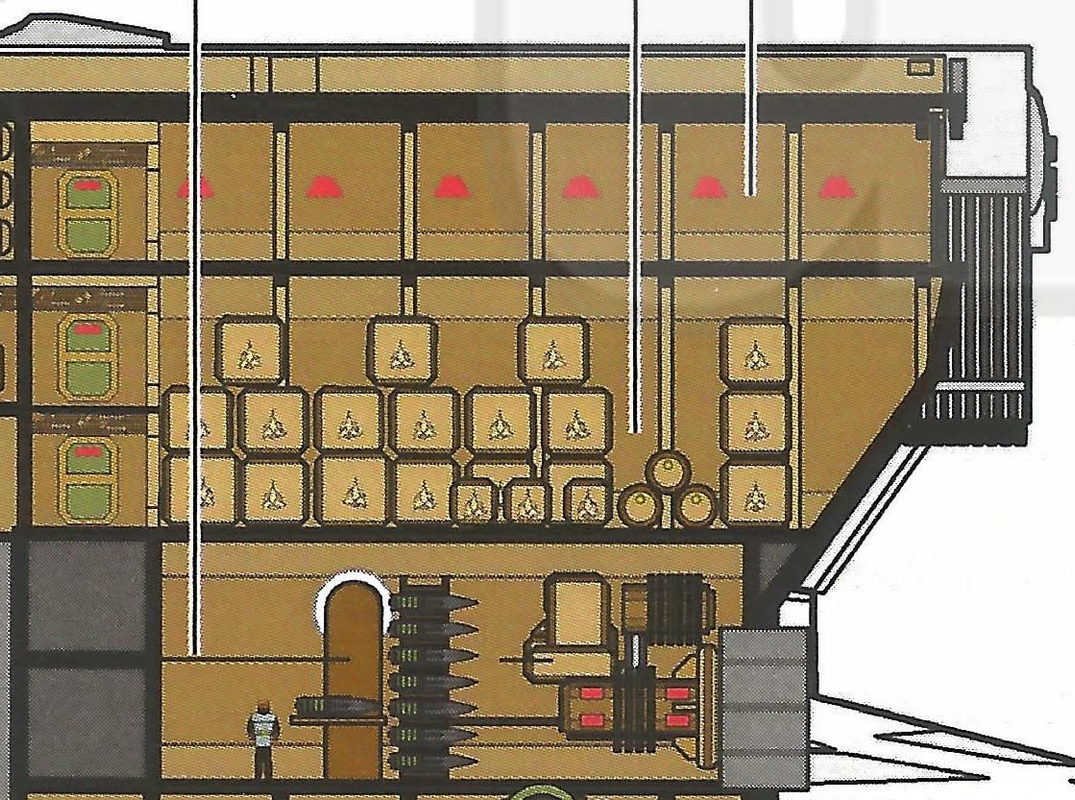
..and here is Jackill's. TBH I believe Andy Probert's Klingon fighter is much larger than presented but again the bigger concern is whether the shuttlebay would work as presented in context with the source model. And regrettably, neither does..
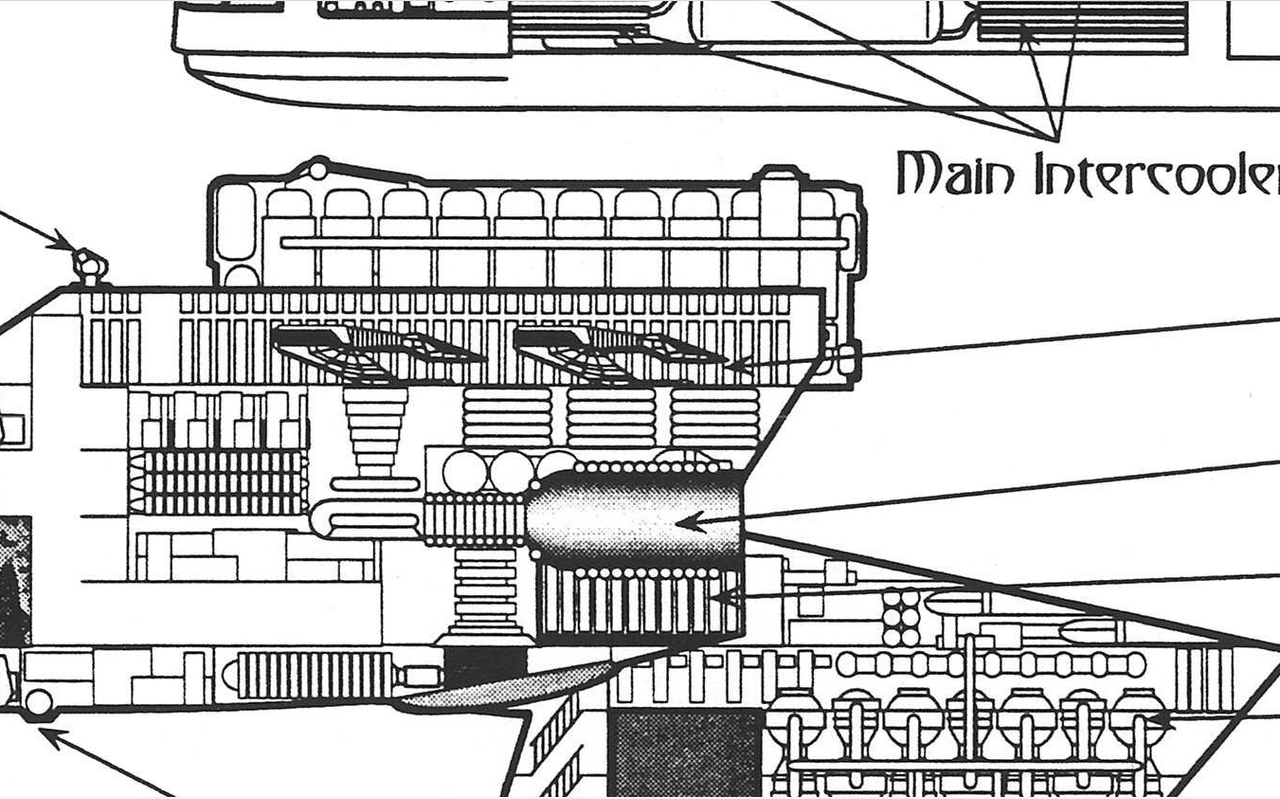
..The picture below gives you a better idea of the problem I think.
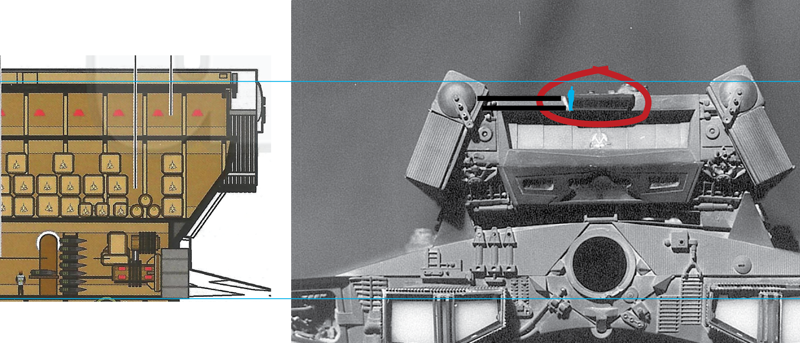
Neither Jackill or Schmidt get the bay placement exactly "right" in the cross-section. Schmidt's is too tall, and Jackill's is too short, but the shuttlebay control room (the red circled area) is absent in both. Further at that scale,the crawlspace and work area for the shuttlebay control room would be probably 1.5' tall at most (little blue guy is scaled to the same height as Schmidt's Klingon for reference). I'm all for the Klingons having cramped work spaces but geesh!
 That's it for now, but I'll be back around later today with some more work.
That's it for now, but I'll be back around later today with some more work.
Last edited:
To start with, I am a staunch advocate for the original 947. I have no idea where the 1080 number comes from, but the ship was scaled to 947 before either original model was built. they were built as 947 feet long and all the details agree with that.
Second, Star Cruiser correctly points out that starships are not required to have nice even decks. There is no reason for that. We have an excellent example in the TOS Engineering set. We also have an excellent example in the USS Constitution's Orlop deck and the USS Arizona plans (http://www.researcheratlarge.com/Ships/BB39/BOGP/). The decks would be built as needed. Even spacing is not required and Jefferies didn't adhere to that.
Also, the movie Klingon model was an upscaled version of the TOS model. AMT made serious changes, but the development history of the movie model indicates it should be roughly the same length as the TOS ship.
If you are going to rescale the TOS Enterprise, you almost have to rescale the Klingon ships and the movie ships. That screen capture from the Enterprise Incident shows the relative scale. And whether or not the scale could actually be read on the screen, it was in print in TMOST at almost the same time so everyone would know the scale. It was the first publicly available graphic from the series. It establishes a scale for both ships. If you chose to ignore the exact scale, it still provides a relative scale between the ships that should be kept.
so far the only size I've seen that really provides any benefit is to enlarge the TOS E to a little over 1300 feet. That gives just about 11 nice full decks in the saucer and keeps most of the 10 foot set height. As the exterior was designed, it can't be any smaller that 947. The reported 540 size came before the bridge was designed. I think it does tie into the 203 crew size in the script, but nothing else. All the production design was done for a 947 foot long ship. TMOST confused the issue by having a deck description that can't quite fit in the saucer as Jefferies drew it and Datin built it. Jefferies cross sections (TOS and Phase II) both have fewer decks and a higher ceiling height. So if you were sticking to what Jefferies intended, there are guides to go by. I prefer to assume some hollywood trickery and design the interiors to match the exteriors and follow the TMOST desk descriptions. That bothers some so I get the change i size, but there is nothing tying any part of the design history to 1080 feet. That is a bogus number. The bridge as designed fits perfectly in the pilot bridge dome.
But it would be interesting to see what scale the Klingon ships might suggest. I love the discussions, I just hate for anyone to insist that a particular alternate scale must be the right one. Everything was done at 947.
Second, Star Cruiser correctly points out that starships are not required to have nice even decks. There is no reason for that. We have an excellent example in the TOS Engineering set. We also have an excellent example in the USS Constitution's Orlop deck and the USS Arizona plans (http://www.researcheratlarge.com/Ships/BB39/BOGP/). The decks would be built as needed. Even spacing is not required and Jefferies didn't adhere to that.
Also, the movie Klingon model was an upscaled version of the TOS model. AMT made serious changes, but the development history of the movie model indicates it should be roughly the same length as the TOS ship.
If you are going to rescale the TOS Enterprise, you almost have to rescale the Klingon ships and the movie ships. That screen capture from the Enterprise Incident shows the relative scale. And whether or not the scale could actually be read on the screen, it was in print in TMOST at almost the same time so everyone would know the scale. It was the first publicly available graphic from the series. It establishes a scale for both ships. If you chose to ignore the exact scale, it still provides a relative scale between the ships that should be kept.
so far the only size I've seen that really provides any benefit is to enlarge the TOS E to a little over 1300 feet. That gives just about 11 nice full decks in the saucer and keeps most of the 10 foot set height. As the exterior was designed, it can't be any smaller that 947. The reported 540 size came before the bridge was designed. I think it does tie into the 203 crew size in the script, but nothing else. All the production design was done for a 947 foot long ship. TMOST confused the issue by having a deck description that can't quite fit in the saucer as Jefferies drew it and Datin built it. Jefferies cross sections (TOS and Phase II) both have fewer decks and a higher ceiling height. So if you were sticking to what Jefferies intended, there are guides to go by. I prefer to assume some hollywood trickery and design the interiors to match the exteriors and follow the TMOST desk descriptions. That bothers some so I get the change i size, but there is nothing tying any part of the design history to 1080 feet. That is a bogus number. The bridge as designed fits perfectly in the pilot bridge dome.
But it would be interesting to see what scale the Klingon ships might suggest. I love the discussions, I just hate for anyone to insist that a particular alternate scale must be the right one. Everything was done at 947.
As a 3d person who likes to break out the sliderule to make sense out of what is seen. almost the first thing I do is find out what its stated length is, and then do a deck layout. Almost as a rule, the windows outside NEVER match up with whatever decks is layed out in any meaningful mannor, some really try to do it right, others just don't give a damn.
When I build said 3d model, I try to correct the window placment as best I can.
Even in current CGI days its a crap shoot, I done all the Discover starfleet ships, there all over the map.. The Engle is quite good, the Magee class is utter garbage with window placement and stated length.
When I build said 3d model, I try to correct the window placment as best I can.
Even in current CGI days its a crap shoot, I done all the Discover starfleet ships, there all over the map.. The Engle is quite good, the Magee class is utter garbage with window placement and stated length.
Voyager and the NX-01 are pretty much the only ones where things work out well.
The 1080 ft length comes from the fact that the Enterprise was originally scaled to be 540 ft long and have an approximately 200 person crew. It was later decided to make the ship twice as big to justify a larger crew. Matt Jefferies gave it a length of 947 ft but some people say it should have been 1080 ft based on making it twice as big.To start with, I am a staunch advocate for the original 947. I have no idea where the 1080 number comes from, but the ship was scaled to 947 before either original model was built. they were built as 947 feet long and all the details agree with that.
Second, Star Cruiser correctly points out that starships are not required to have nice even decks. There is no reason for that. We have an excellent example in the TOS Engineering set. We also have an excellent example in the USS Constitution's Orlop deck and the USS Arizona plans (http://www.researcheratlarge.com/Ships/BB39/BOGP/). The decks would be built as needed. Even spacing is not required and Jefferies didn't adhere to that.
Also, the movie Klingon model was an upscaled version of the TOS model. AMT made serious changes, but the development history of the movie model indicates it should be roughly the same length as the TOS ship.
If you are going to rescale the TOS Enterprise, you almost have to rescale the Klingon ships and the movie ships. That screen capture from the Enterprise Incident shows the relative scale. And whether or not the scale could actually be read on the screen, it was in print in TMOST at almost the same time so everyone would know the scale. It was the first publicly available graphic from the series. It establishes a scale for both ships. If you chose to ignore the exact scale, it still provides a relative scale between the ships that should be kept.
so far the only size I've seen that really provides any benefit is to enlarge the TOS E to a little over 1300 feet. That gives just about 11 nice full decks in the saucer and keeps most of the 10 foot set height. As the exterior was designed, it can't be any smaller that 947. The reported 540 size came before the bridge was designed. I think it does tie into the 203 crew size in the script, but nothing else. All the production design was done for a 947 foot long ship. TMOST confused the issue by having a deck description that can't quite fit in the saucer as Jefferies drew it and Datin built it. Jefferies cross sections (TOS and Phase II) both have fewer decks and a higher ceiling height. So if you were sticking to what Jefferies intended, there are guides to go by. I prefer to assume some hollywood trickery and design the interiors to match the exteriors and follow the TMOST desk descriptions. That bothers some so I get the change i size, but there is nothing tying any part of the design history to 1080 feet. That is a bogus number. The bridge as designed fits perfectly in the pilot bridge dome.
But it would be interesting to see what scale the Klingon ships might suggest. I love the discussions, I just hate for anyone to insist that a particular alternate scale must be the right one. Everything was done at 947.
One of the reasons I question this is that Jefferies very specifically listed 947' (or about 289 meters) on his drawings. Just as the Phase II design was longer and the TMP refit was 1000 feet (or about 305 meters). All these sizes are documented by the designers. Changing the scale really doesn't accomplish anything. What it was originally scaled at is irrelevant when the actual designer is telling us what the new scale is. All it means is the designer changed their mind. Just the the TOS Klingon Battle Cruiser was built to a weird scale. From the drawing that is in TMOST and The Enterprise Incident, the Klingon ship is roughly 725 feet long. So how do you get a 29 inch model from that? AMT built it to be twice the scale of their Enterprise, so the scale is 1/325. Weird scale, until you shrink it in half and have 1/650. So whatever scale the two TOS Enterprises were built to is less important that the size of the model.The 1080 ft length comes from the fact that the Enterprise was originally scaled to be 540 ft long and have an approximately 200 person crew. It was later decided to make the ship twice as big to justify a larger crew. Matt Jefferies gave it a length of 947 ft but some people say it should have been 1080 ft based on making it twice as big.
My understanding from David Shaw's work is that the size of the models (the 33 inch is 1/4 scale to the 11 foot) is based on how big the 11 foot model could be. That suddenly becomes more important that whether the scale works out nice or not. And Jefferies clearly intended the ship be 947 feet because when he went to redesign it for Phase II he kept the core the same size, just made the saucer larger and the overall length and width larger and kept that same scale. The TMP refit kept Jefferies sizes and just made the nacelles longer to get to 1000 feet. So if you change the scale of the TOS Enterprise, you derail the scale of the Phase II design, the TMP design and ultimately the Excelsior design. And we could add in Reliant, Grissom, and the other TOS/TMP era designs. And thanks to Discovery, the 289 meter length for the TOS Enterprise is canon (if you consider Discovery canon). This urge to change the scale of designer set lengths just causes a lot of confusion and has a huge ripple effect.
I consider the 947 TOS length, 1000 foot TMP Refit length, and the 1531 Excelsior length to be canon and unchangeable. I don't think a lot of people realize the mammoth size of those ships at that scale.
..The picture below gives you a better idea of the problem I think.

Looks like the meatball array for carriers. I look forward to more...
Mmm. Each of those containers serves as a trailer...and each of them look to fill up the Refit shuttle bay. I think the secondary hull needs to be about as long as that ship...with the dish being Goldstone sized...but that is me. Over time, Trek ships are increasingly tiny compared with so many other offerings. This is going to seem mad... but that container ship isn’t really that big to me.
Yeah, that mostly shows that the Enteprise is primarily empty space, and the hull can't actually hold that much stuff. The cargo bay would fit maybe four to six cargo containers, and even that would be tricky because someone decided that'd be a good place to stick lift shafts.
What says it's a shuttlebay? There are no "door" details on it. The K'tinga makes it look door-like, but it could just as easily be a cargo loading door or something like that.Now, the shuttlebay doors on the old D-7 - that's always been an issue since way back in the before time...
It's 'assumed' that they are shuttlebay doors but, yeah - it's not specified anywhere official. Just in various fan-made blueprints and the like...
Similar threads
If you are not already a member then please register an account and join in the discussion!

